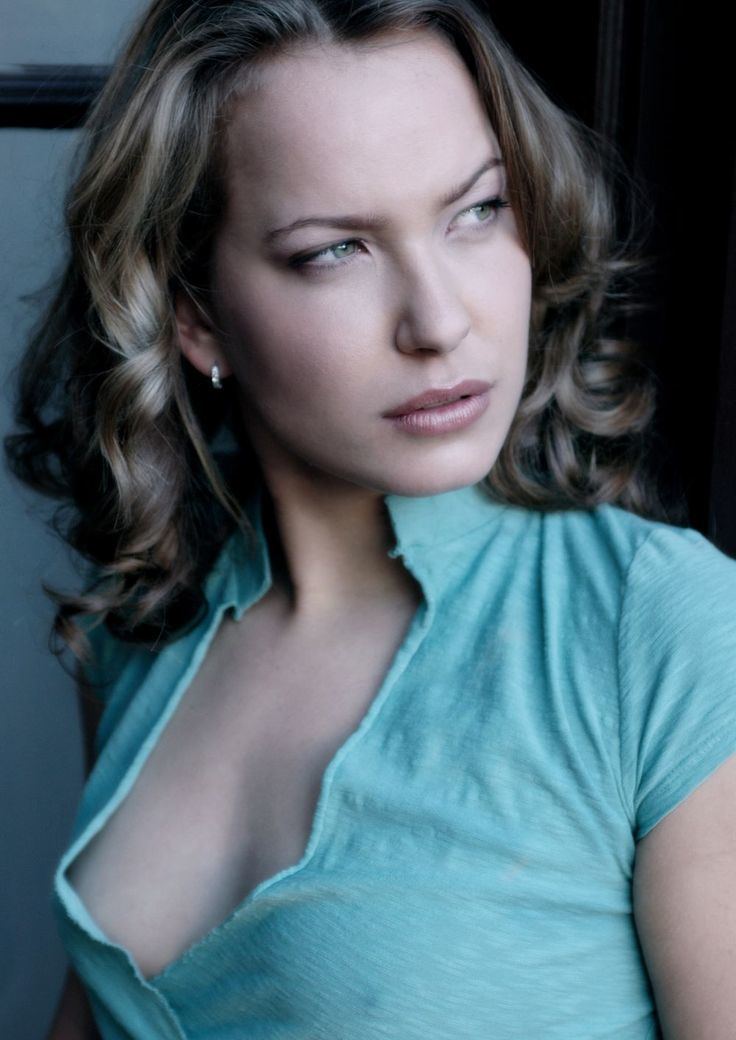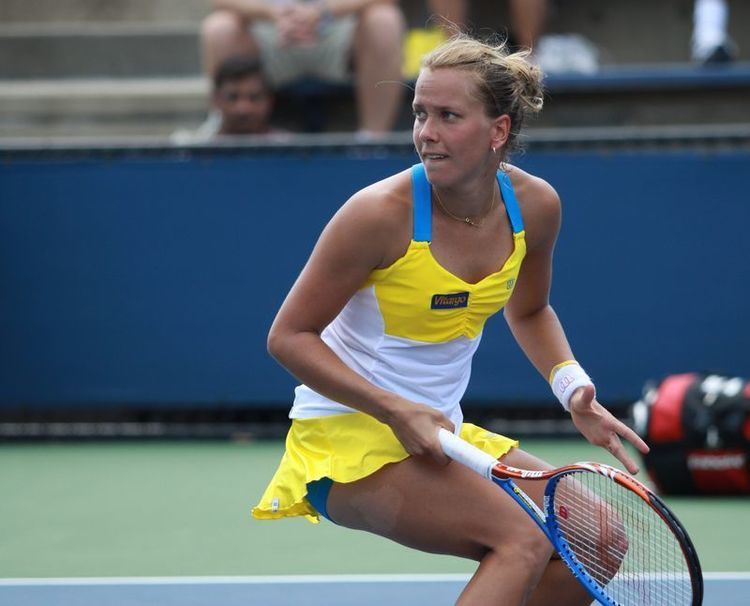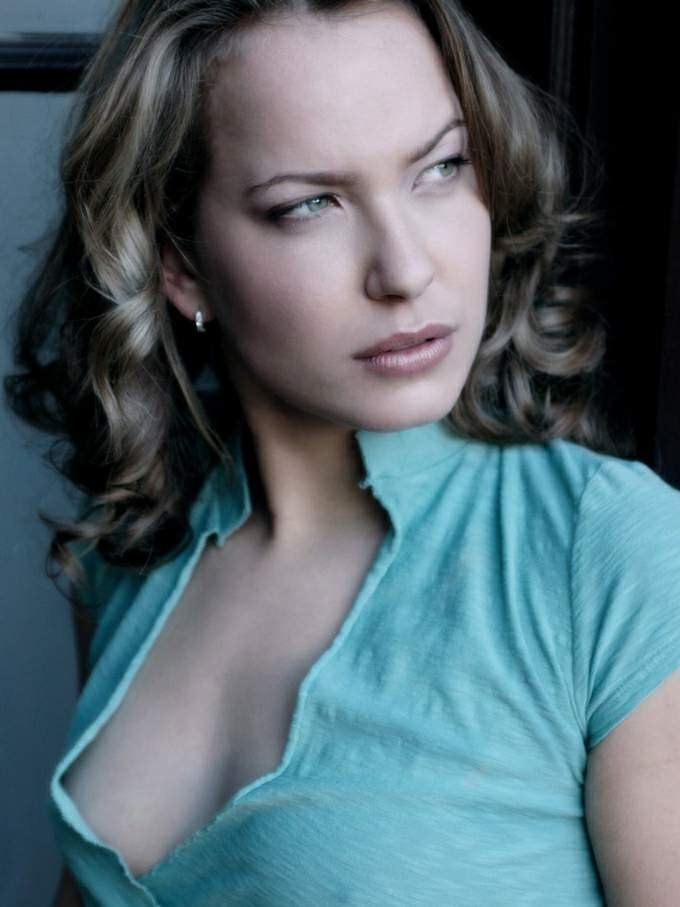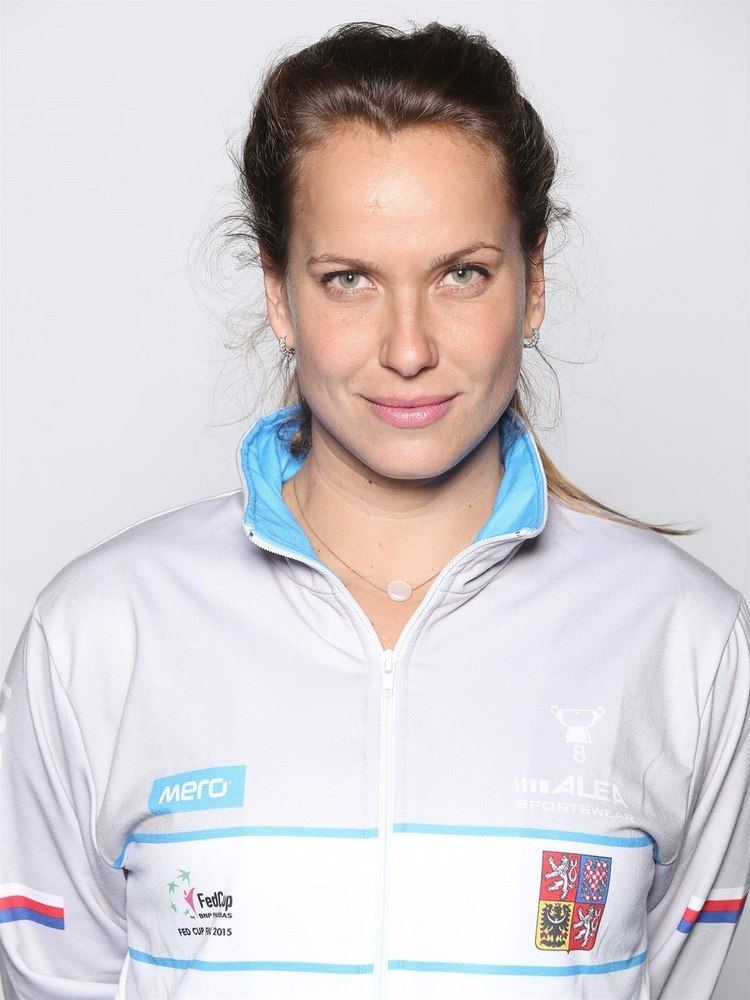Full name Barbora Strycova Career record 428–304 (58.47%) Weight 60 kg Prize money $4,129,340 Height 1.64 m | Turned pro 2003 Role Tennis player Name Barbora Strycova Siblings Ivona Strycova | |
 | ||
Born 28 March 1986 (age 39) Plzen, Czechoslovakia(now Czech Republic) ( 1986-03-28 ) Plays Right-handed (two-handed backhand) Spouse Jakub Herm-Zahlava (m. 2006) Parents Jindrich Stryc, Ilona Strycova Similar People Karolina Pliskova, Petra Kvitova, Lucie Safarova, Lucie Hradecka, Klara Koukalova Profiles | ||
2015 wuhan open second round barbora strycova vs maria sharapova wta highlights
Barbora Strýcová ( [ˈbarbora ˈstriːtsovaː]; born 28 March 1986 in Plzeň), formerly known as Barbora Záhlavová-Strýcová, is a professional Czech tennis player. Her highest WTA singles ranking is world number 16, a ranking she achieved on 16 January 2017.
Contents
- 2015 wuhan open second round barbora strycova vs maria sharapova wta highlights
- Styltip sport barbora str cov
- Early years
- 2009
- 2010
- 2011
- 2013
- 2014
- 2015
- 2016
- Court demeanor
- Personal life
- References
Styltip sport barbora str cov
Early years

Strýcová was a strong junior player, winning two Grand Slams in girls' singles: the 2002 Australian Open and then defending that title at the 2003 Australian Open. She also won three Grand Slam girls' doubles titles between 2001 and 2003.

She reached world number 1 in both singles and doubles on the junior rankings, achieving both in 2002, and was named the ITF Junior World Champion that same year. In her junior career, she beat several players who went on to become notable professionals such as Maria Sharapova, Anna-Lena Grönefeld, Tatiana Golovin, Shahar Pe'er and Maria Kirilenko.

Turning professional in 2003, Strýcová had already worked her ranking into the top 300 after some good results in ITF Women's Circuit events over 2002. She continued to play mostly ITF circuit events throughout the year, and made her Grand Slam debut at Wimbledon, qualifying and losing in the first round to Tatiana Perebiynis. She finished the year ranked world number 161.

2004 turned out to be the year that Strýcová stepped up considerably. She began the year by qualifying for the Australian Open and then reached the fourth round at the WTA tournament in Indian Wells, beating seeded player Eleni Daniilidou before losing to Justine Henin, a result that broke her into the top 100 for the first time. She recorded another notable win over Anna Smashnova in Amelia Island, and won her first two Grand Slam main draw matches at the Australian Open and French Open. After hitting a rough patch in the middle part of the season, she finished the year strongly by reaching her first WTA semifinal at an event in Guangzhou and winning an ITF event in Saint-Raphaël, France. She finished the season ranked world number 56.

Strýcová's progress took a step backwards in 2005, dropping out of the top 100 in the world after failing to back up her breakthrough season and winning just 17 matches throughout the season. Despite this, she achieved some notable results in doubles, reaching four WTA doubles finals and winning the title on two of those occasions. 2006 also begun poorly for her in singles, as she struggled to string together wins and subsequently dropped out of the top 200 of the world rankings in April 2006 before recovering slightly after some good results in ITF events. She married her coach between the 2006 and 2007 seasons. In 2007, Záhlavová-Strýcová played mostly on the ITF circuit once more and achieved some good results, reaching several semifinals throughout the season, but still sat outside the top 100.

After a few years seemingly in limbo, Záhlavová-Strýcová's plugging away at ITF events finally managed to bring with it some results by 2008, winning titles in Fort Walton Beach, Redding (both American events) and Szczecin, Poland, and reaching the second round in WTA events in Amelia Island and Charleston. She qualified for Wimbledon and made the third round of a Grand Slam for the first time in her career thus returning to the top 100, where she remained until the end of the season, her second top-100 year-end finish.
2009
Záhlavová-Strýcová failed to make any progress in her first five tournaments of the season, including at the Australian Open where she lost to Stéphanie Cohen-Aloro, but she enjoyed some success in two small tournaments in Mexico, reaching the semifinals in Acapulco and the quarterfinals in Monterrey, beating top 20 player Flavia Pennetta at the latter event.
Following that, she returned to struggling ways, losing her opening match in all but three tournaments up to July. She fell out of the top 100 after Wimbledon, where she was defending third round points, by losing in the first round to Ekaterina Makarova.

Záhlavová-Strýcová's results improved during the latter part of the year, starting with a quarterfinal appearance at the WTA event in Bad Gastein, as well as reaching the doubles final in Prague. She then played a $25,000 in Trnava, Slovakia, where she reached the semifinals, before qualifying and winning her first round match at the US Open, losing to Victoria Azarenka in the second round. She built on these performances in ITF Women's Circuit events at the end of the season, winning the $100,000+H event in Ortisei, Italy, and the $50,000+H event is Ismaning, Germany, and worked her way back into the top 100 for the end of the season. In doubles, she won two straight events at the WTA tournaments in Quebec City and Luxembourg, her fourth and fifth WTA doubles titles.
2010
At the Australian Open, Záhlavová-Strýcová won her first round against Regina Kulikova in a match that lasted 4 hours and 19 minutes – breaking the record for longest match in women's Grand Slam history (which itself was broken a year later by Francesca Schiavone and Svetlana Kuznetsova). She lost in the second round to Dinara Safina. In February and March, she won three doubles titles in Paris, Acapulco and Monterrey, her sixth, seventh and eighth tournament wins in the doubles discipline.
At the French Open, Záhlavová-Strýcová lost in first round to Rossana de los Ríos, before reaching the third round of a Grand Slam for the second time at Wimbledon, where she beat Elena Vesnina and Daniela Hantuchová and lost to Maria Sharapova. Her Wimbledon performance boosted her confidence and thus at the Prague Open she managed to make the first singles final of her career, dismantling Patty Schnyder with the loss of only two games in the semifinals. In the final, she lost to Ágnes Szávay. As a result of her recent form, she rose into the top 50 for the first time in singles following Prague.
Záhlavová-Strýcová continued to enjoy success in doubles for the rest of the season. With her regular partner Iveta Benešová, she won the biggest title of her career at the Premier 5 tournament in Tokyo, and then partnered Renata Voráčová to win Linz, helping her to finish the season in the top 20 of the doubles ranking. In singles competition, she struggled to build on her strong summer results, failing to advance in six of the ten tournaments she played following Prague, among them a first round loss at the US Open to Maria Kirilenko, thus dropping to world number 69 by the end of the year.
2011
Záhlavová-Strýcová defeated Marina Erakovic in the final of the Bell Challenge to claim her first WTA singles title.
2013
In February Záhlavová-Strýcová was banned for six months, backdated to 16 October 2012 until 15 April 2013, after testing positive for the stimulant sibutramine. The ban disqualified all results during the period of the ban and mandates the return of all prizes won during that period. Záhlavová-Strýcová made her return at the Porsche Tennis Grand Prix in Stuttgart. She lost in first round of qualifying to Mirjana Lučić-Baroni. In the first round of doubles, she and partner Julia Görges lost to the pairing of Liezel Huber and Janette Husárová. In May, she won the 2013 Empire Slovak Open, a $75,000 ITF event, and her first tournament win since coming back from her ban.
2014
At the Wimbledon Championships, she defeated reigning Australian Open champion Na Li in third round, in soon-to-be last professional match for world No. 2. Also, she beat Caroline Wozniacki in the fourth round in straight sets after a struggle at the end of the second, during which Wozniacki defended four match points. Advancing to a grand slam singles quarterfinal for the first time, she lost in straight sets to eventual champion, compatriot Petra Kvitová.
2015
Záhlavová-Strýcová started the year strongly, with a semifinal finish at the ASB Classic in Auckland and a quarterfinal showing in Sydney, losing to Caroline Wozniacki and Tsvetana Pironkova respectively.
Seeded 25th in the women's singles draw of the Australian Open, she lost in the third round to former two-time champion Victoria Azarenka. Unseeded in the women´s singles draw of the Diamond Games Antwerp, she lost in semifinal to eventually winner Andrea Petkovic. Unseeded in the women´s singles draw of the Dubai Championships, she lost in the second round to eventual runner-up Karolína Plíšková. She also lost her 2nd round match in Doha to former No.1 Venus Williams after failing to convert a match point.
On 2 March 2015, she achieved a career-high ranking of World no. 20. It was the first time in the Open Era that the World's Top 20 featured four Czech women with Petra Kvitová at no. 4, Lucie Šafářová at no. 11, and Karolína Plíšková at no. 15.
2016
After a couple of early losses at Auckland and Brisbane, Strýcová got as far as the last 16 of the Australian Open, where she was beaten by Victoria Azarenka, and in February to the final at Dubai, where she came runner-up to Sara Errani. This latter success took her back to within the top 40. In her next tournament Qatar Open, she defeated Kristina Mladenovic in the first round, and then lost to compatriot Petra Kvitová in straight sets.
At the BNP Paribas Open, Strýcová won her first round match against Aliaksandra Sasnovich in straight sets and came back from 5–7, 1–3 down to defeat 22nd seed Andrea Petkovic, 5–7, 6–4, 7–5. She then came from a set down to defeat Kurumi Nara, who had just upset Venus Williams. In the 4th round, she had to retire from the match against 5th seed Simona Halep in the second set due to a respiratory infection. At Miami Open, she won her first round match easily against Anna-Lena Friedsam. In the second round, she lost to Germany's Angelique Kerber in straight sets. In the Fed Cup semi-final against Switzerland, she got an easy win over Timea Bacsinszky, 6-0 6-2. Lost her next match to Fed Cup hero Viktorija Golubic in three sets.
Her first clay tournament was the home tournament JT Banka Prague Open. Strýcová reached the quarterfinals, falling to Samantha Stosur in a tight three set match, 3-6 7-6 6-7. She played Madrid next, where she upset then #3 Angelique Kerber in straight sets, then lost to Madison Keys in the second round. Her next tournament was Rome, where she reached the quarterfinals with wins over Karin Knapp, Heather Watson, and Eugenie Bouchard. In quarterfinals, she faced Madison Keys, and lost in a tight three setter, 4-6 6-4 3-6, having been up two breaks in the first set. Yet, this was her best result in Rome. Having not won a main draw match in a decade in Rolland Garros, she reached the third round with wins over compatriot Lucie Hradecka and Polona Hercog In the third round she faced then #2 Agnieszka Radwańska, and lost in three sets, 2-6 7-6 2-6.
She started her grass season in Birmingham, where she reached the final, facing both her opponents and never-ending rain delays. On her way to the final, she got wins against compatriot, 8th seed Karolína Plíšková, Heather Watson, Tsvetana Pironkova, and Coco Vandeweghe. She faced Madison Keys in the final, and suffered her third loss to her in less than two months, 6-3 6-4. She was the 24th seed in Wimbledon, where she reached the third round beating Anett Kontaveit and wildcard Evgeniya Rodina. There she lost to Ekaterina Makarova who had just beaten double champion Petra Kvitová, 6-4 6-2.
At the summer Olympics in Rio on August 13, 2016 she won her first ever Olympic medal, a bronze in the Women's doubles playoff with her partner Lucie Šafářová.
At 2016 Western & Southern Open in Cincinnati, she came away with the women's doubles title with her new partner Sania Mirza while defeating Martina Hingis and Coco Vandeweghe in the finals. It was after this tournament that she reached a new career high ranking of no. 19 in singles.
Court demeanor
She has been known to be vocal with her dissatisfaction during changeovers, and is noted for racket abuse. In a match against Maria Sharapova at the 2008 Bausch & Lomb Championships she threw her tennis racket and yelled at the chair umpire. In 2010 at Wimbledon, in another match against Sharapova, she twice slammed her racket on the ground.
Personal life
Strýcová was married to former tennis player Jakub Herm-Záhlava, a cousin of Sandra Záhlavová. He was also her coach, having been in that position since 2007. Since the couple divorced in 2015, she uses her birth name, Barbora Strýcová, again.
